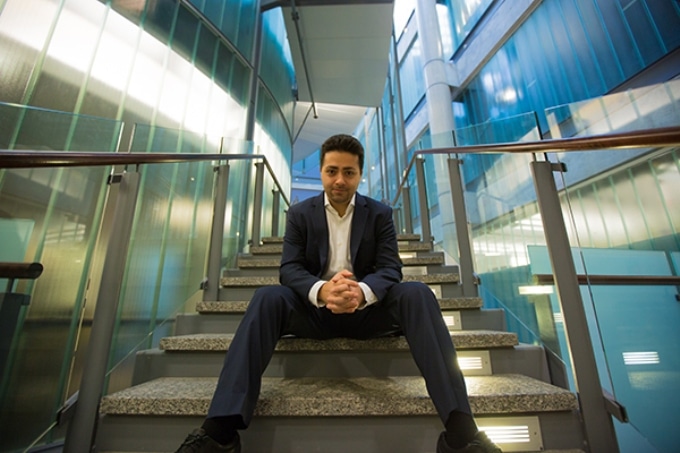Nov 17 2016
 Professor Parham Aarabi (ECE) has developed a new machine learning training method that enables neural networks to learn directly from human-defined rules, opening new possibilities for artificial intelligence in fields from medical diagnostics to self-driving cars. (Credit: Johnny Guatto)
Professor Parham Aarabi (ECE) has developed a new machine learning training method that enables neural networks to learn directly from human-defined rules, opening new possibilities for artificial intelligence in fields from medical diagnostics to self-driving cars. (Credit: Johnny Guatto)
As a result of a new machine learning algorithm formulated by engineering researchers Parham Aarabi (ECE) and Wenzhi Guo (ECE MASc 1T5) at University of Toronto, smartphones may soon be able to provide users with honest answers.
The researchers prepared an algorithm that was capable of learning directly from human instructions, instead of an existing set of examples, and surpassed conventional techniques of training neural networks by 160%.
But more astonishingly, their algorithm also surpassed its own training by 9% - it learned to identify hair in pictures with better reliability than that enabled by the training, signifying a major leap forward for artificial intelligence.
Aarabi and Guo programmed their algorithm to recognize people’s hair in photographs - a much more challenging mission for computers compared to humans.
Our algorithm learned to correctly classify difficult, borderline cases - distinguishing the texture of hair versus the texture of the background. What we saw was like a teacher instructing a child, and the child learning beyond what the teacher taught her initially.
Parham Aarabi, University of Toronto
Humans “teach” neural networks - computer networks capable of learning dynamically - by providing labeled data and commanding the neural network to form decisions based on the samples it has seen. For instance, users can program a neural network to identify sky in a photo by showing it many pictures with the sky labeled.
However, this algorithm is unique: it is capable of learning directly from human trainers. With this model, known as heuristic training, humans give direct instructions that are used to pre-categorize training samples instead of a set of fixed examples.
Trainers feed the algorithm with guidelines such as “Sky is likely to be varying shades of blue,” and “Pixels near the top of the image are more likely to be sky than pixels at the bottom.”
Their research is published in the journal IEEE Transactions on Neural Networks and Learning Systems.
This heuristic training method holds substantial promise for solving one of the greatest challenges for neural networks: making accurate categorizations of formerly unlabeled or unknown data. This is vital for applying machine learning to new situations, such as classifying all the objects approaching and surrounding a self-driving car, or appropriately identifying cancerous tissues for medical diagnostics.
Applying heuristic training to hair segmentation is just a start. We’re keen to apply our method to other fields and a range of applications, from medicine to transportation.
Wenzhi Guo, University of Toronto